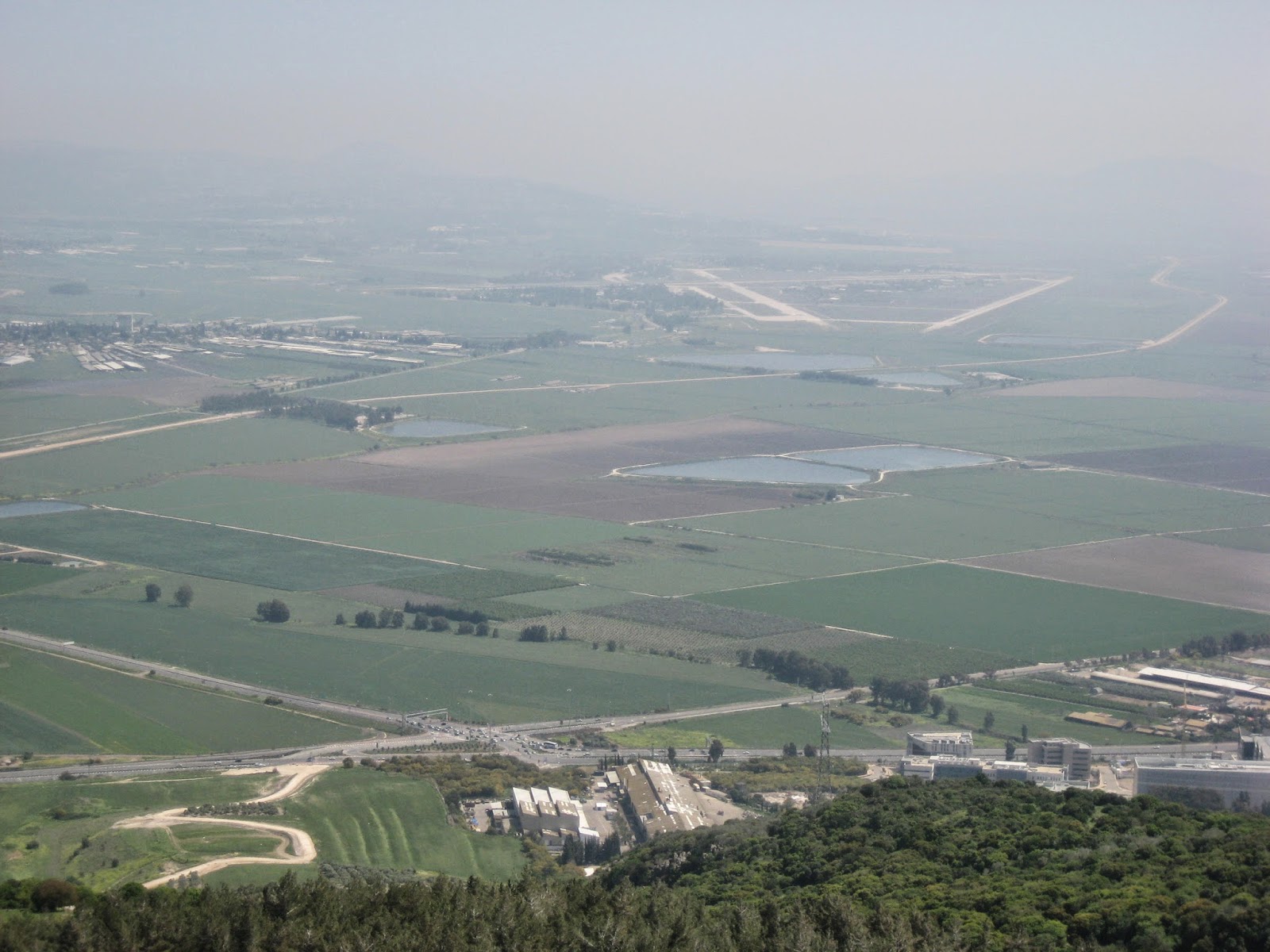The bus takes us up the coast of Israel for some ways and then turns inland. We are headed to Mt. Carmel. This is where our guide tells us that a name like Mt. Carmel does not necessarily mean "a mountain named Carmel" like we think of place names. In biblical place names, a name like "Mt. Carmel" may refer to a range of mountains, which in the case of Mt. Carmel it does. Also Mt. Ararat where Noah's ark came to rest also refers to a range of mountains and not just a single peak. Ooohhh....we ponder this. This is a sort of "rule" when it comes to mountains in the middle east. Except like when it doesn't apply. A lot like the "rules" of English..."i before e except after...." The rule applies except when it doesn't.
So what this means to a tourist pilgrim like us, is that when we read in II Kings 18 of Elijah the prophet confronting the prophets of Baal on Mt. Carmel, we don't know which mountain of the mountains of Mt. Carmel this event took place. To our sense of drama, we assume it must have been the highest peak. We are not alone in this assumption as when we finally get to the highest peak on Mt. Carmel we find, a monastery. This monastery is dedicated to a monk to whom a statue has been erected in his memory. He is a mean looking guy holding a crooked sword and scowling down from his lofty perch on a pedestal. I decide I don't like this guy.
It is otherwise an interesting place. First of all, it is very green and vegetated. Not at all what I expected for Israel. The name means: el = god carm = vineyard or "vineyard of the gods". I don't see any grapes around the monastery but they must be somewhere. Apparently they grow them somewhere on Mt. Carmel. It is getting pretty warm about midday at this point. They have some beautiful shaded areas with semi-circle seating and it is very pleasant. We gather for a study devotion here.
We are allowed to enter the monastery to climb up the stairs to the roof of the place which allows us an amazing view of the middle region of Israel. This is our first significant encounter with stairs, but not our last. Oh, no. Stairs will be a huge part of life for the next 8 days. Many stairs. Many stairs.
From on top, you can see from the Mediterranean Sea to the West Bank of Israel. It is very hazy so our view is somewhat limited, but we can see the Nazareth mountains, Mt. Gilboa (which interesting enough refers to one mountain) where King Saul and his sons were slain, Mt. Tabor (also reference to a single mountain) where tradition claims is the Mount of the Transfiguration. Our guides disagree, and place that location in Galilee.
What we also see spread out before us is the Valley of Megiddo. The natives pronounce it "Maw gee dough". This is the infamous location of the Battle of Armageddon. It is beautiful. It is full of agriculture and fields. Too wonderful to think of a devastating battle to be fought here.
Down in the valley is a small, meandering stream, which is the most likely source of water for Elijah's request that water be poured over the altar of sacrifice he built for his showdown with the prophets of Baal. It is mentioned in some writings of antiquity and was apparently once a mighty rushing stream of water. One writing the guide referred to said that an opposing army was swept off it's banks by it's thunderous waves. Well, I suppose things do change over time, but really, the enemy army must have been pipsqueaks. That stream hardly looks big enough to float a canoe.
The real value of climbing all the stairs of the monastery on Mt. Carmel is how suddenly the geography of Israel connects with the Bible in your understanding. As you survey the landscape and see the biblical locations as they are and not depictions on a flannelgraph board in a Sunday School room a long time ago, there is a powerful bond that takes place within you to the reality of the Bible. These are not places of myths or legends, they are actual locations. Recently as I was reading through the Psalms, one of the psalms mentioned "Mt. Tabor and Mt. Gilboa". I was instantly transported to this moment on top of Mt. Camel with the images of those two mountains before me. Powerful.
By this time we are hot, hungry and sweaty, not the best combination of feelings, but ahh... there is warm water to drink. Down the stairs we go hearing whispers of "blood up to a horse's bridle" from people passing by. It is time for lunch.













No comments:
Post a Comment
I would be interested to have your comments!